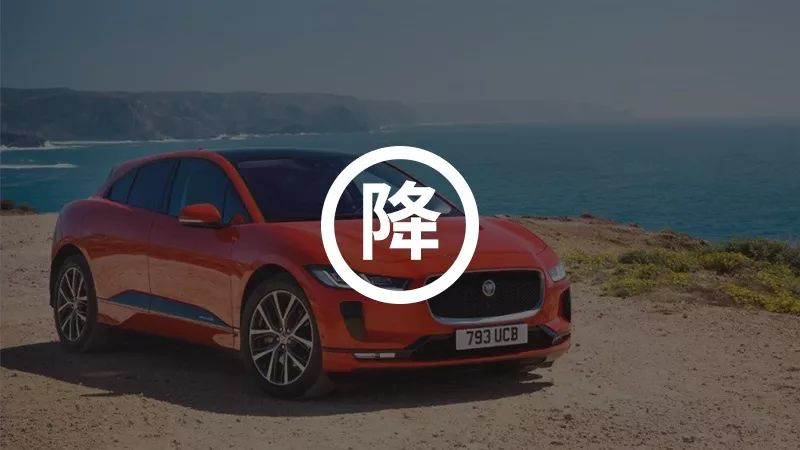In 2019, after the decline in new energy vehicle subsidies, sales of new energy vehicles fell for five consecutive months and the auto market faced an unprecedented blow. In this context, I unexpectedly saw a purchase discount poster for the Jaguar I-PACE in the 42HOW car enthusiasts group, as follows:
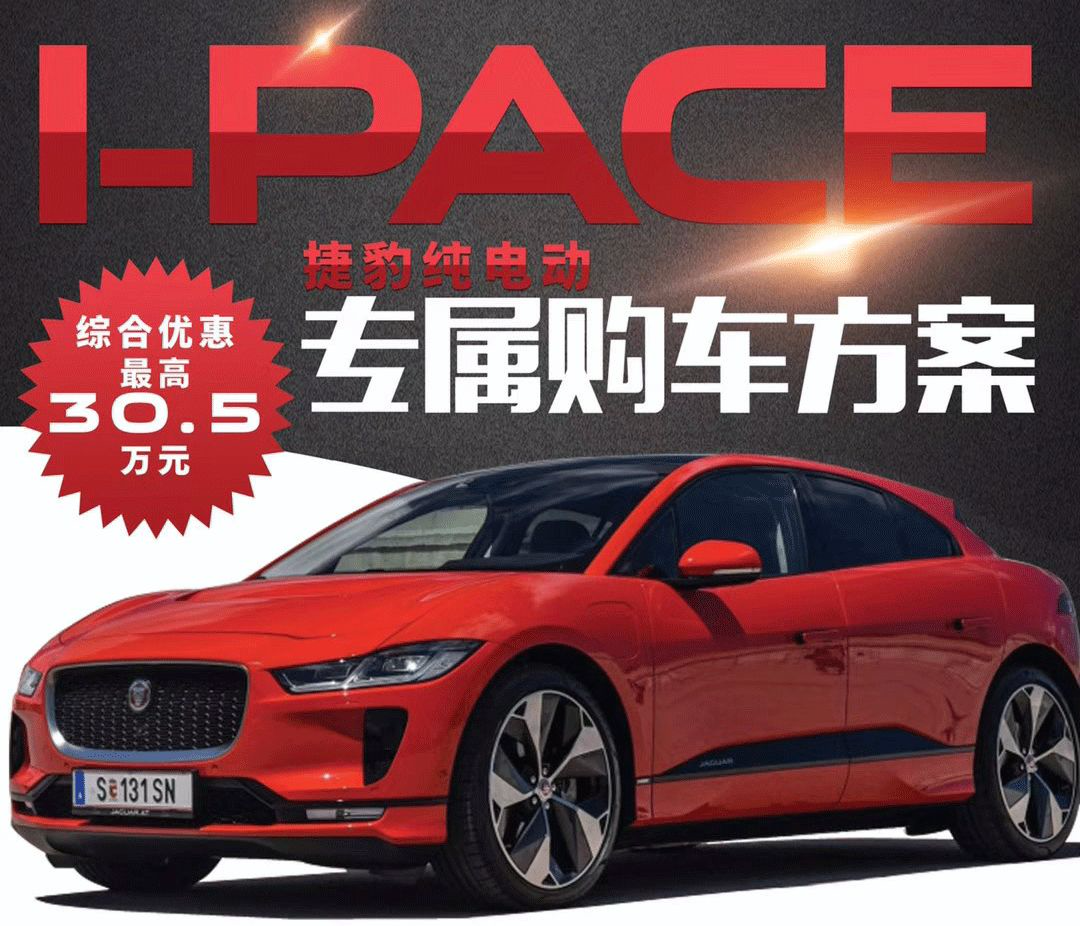
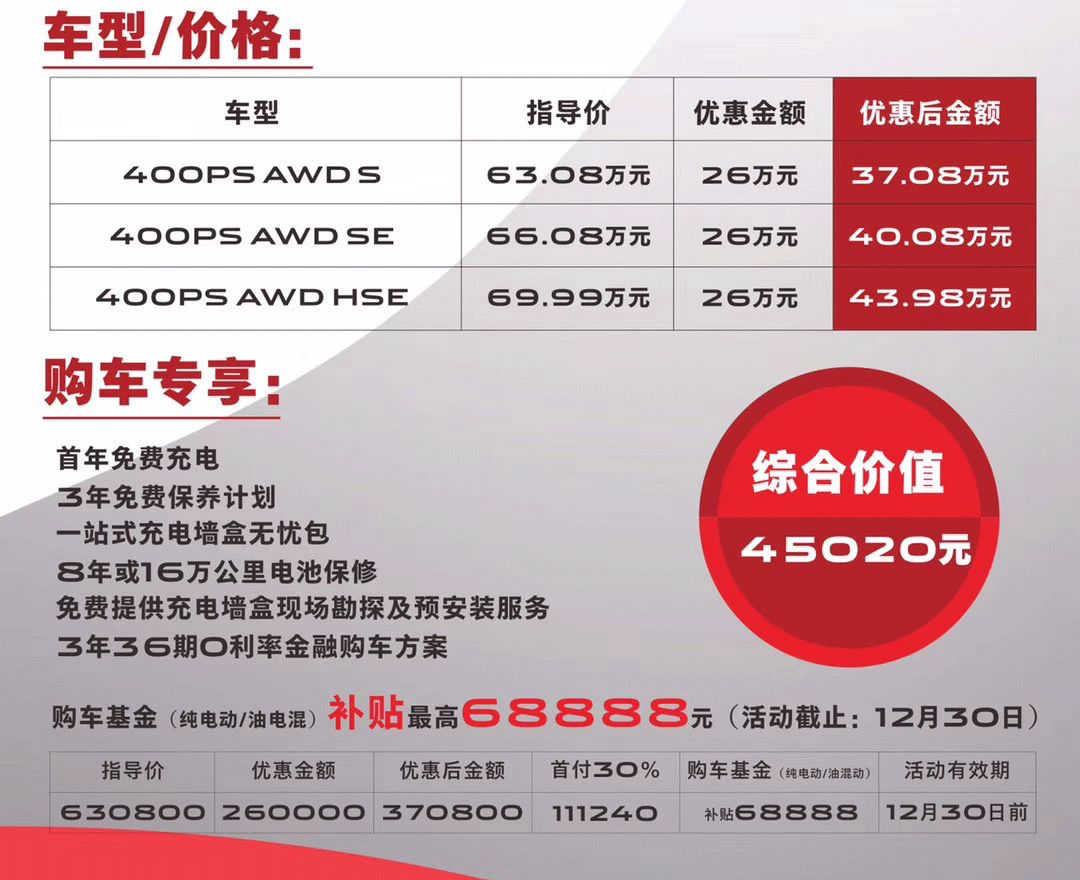
From the car purchase plan shown above, all three models of the Jaguar I-PACE have a discount of CNY 260,000. After the discount, the cheapest model sells for CNY 370,800. Apart from some exclusive benefits for car purchases, buyers can also receive a maximum car purchase fund subsidy of CNY 68,888. As a result, the lowest price drops to around CNY 300,000. It can be seen that the Jaguar I-PACE has failed, dropping from over CNY 600,000 to this extent.
It is unexpected that the Jaguar I-PACE was given the title of “Tesla Killer” when it was launched, but now it has fallen into this situation. Today, we will briefly discuss the problem of the price drop of the I-PACE.
Traditional automakers fail to break through to high-end markets
Currently, sales of pure electric vehicle models are polarized. Either low-end models sell well or mid-to-high-end models sell well.
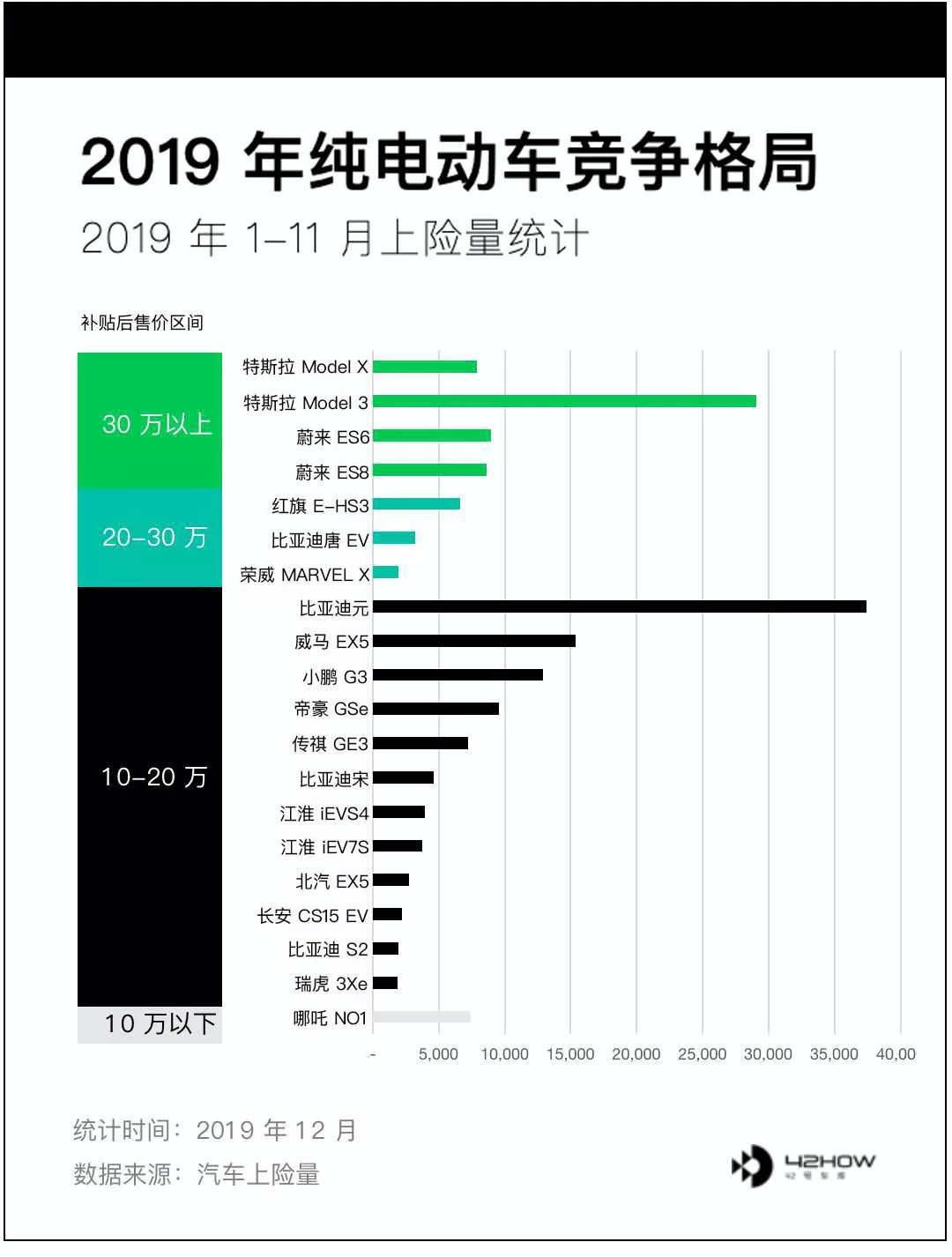
From the above picture, it can be seen that most of the traditional domestic brands focus on the market centered around CNY 150,000. Tesla and NIO dominate the market for cars selling above CNY 350,000. It also reflects the low sales of high-end models from traditional luxury brands, such as the Audi e-tron, which only had 131 insurance registrations when it was launched on November 18th, and the Mercedes-Benz EQC, which only had 25. Although these models were just launched, this data shows that most people are still in the observation stage for traditional luxury pure electric vehicles.
However, Tesla and NIO have been relatively successful. Looking at how Tesla and NIO broke through with high-end markets, they have already sparked people’s purchase desire in the private market. Tesla’s total insurance registrations from January to November 2019 amounted to 38,731, and NIO’s totaled 17,565 during the same period. In summary, each brand has its own characteristics with Tesla’s technology and NIO’s service.
So if traditional car companies only change the form of power, they won’t be attractive enough to consumers. After all, range anxiety and charging anxiety need to be solved, but each car company may have different ways of dealing with them, such as NIO’s battery swap, Ideal’s range extension, and XPeng’s supercharging, etc. These car companies have done a good job of differentiation.
However, looking at the Jaguar I-PACE, there are still these problems behind the price drop:
-
Different from new car manufacturers, traditional car brands like Jaguar sell both fuel and electric cars through dealerships. But I-PACE suffers from low profits and small volume, while fuel cars still enjoy relatively high profits. If you are a salesperson, would you choose to promote fuel cars or electric cars first? Similarly, these issues are also faced by traditional car brands.
-
Many manufacturers are not aware that the national standard charging piles need a team to support testing. For example, I-PACE did not test the national standard charging pile adaptation, which caused many charging piles to actually mismatch. In this way, there are significant limitations in the charging area of I-PACE, which further exacerbates range anxiety.
-
As far as we know, the overseas development team of I-PACE has been disbanded and merged into other teams. That is to say, the I-PACE project has temporarily suspended development, so what does it mean to lose development? I think you all know better than me.
In summary, it raises a question: when you have 600,000 yuan in your hand, will you buy a traditional new energy vehicle like I-PACE, or choose a fuel vehicle with higher residual value, or Tesla, with advanced technology, or NIO with excellent service? I believe everyone has a clear answer in their hearts.
Situation of low-end market in the new energy field
After reading about the high-end market, let’s briefly sort out the mid-to-low-end market below 150,000 yuan, where there are many models and fierce competition. But from the top ten selling models, most of them are in the B-side market and the “license demand” market.
For the B-side market, affected by the subsidy decline, the sales volume of new energy passenger cars has been continuously declining year-on-year and month-on-month since July. In the first month after the subsidy decline, in July, the sales volume of new energy narrow passenger cars was 67,000, a year-on-year decrease of 3.8\% and a month-on-month decrease of 51.3\%. Therefore, after the subsidy decline, the B-side market began to be “cold”.
For the “license demand” market customers, converting from oil to electricity saves time and money for enterprises, and can also relatively decrease prices at the terminal. Saving money is also what users in this interval value most. Therefore, car companies that have not yet entered this interval or are preparing to enter are facing huge challenges.## 200-300K or the next breakthrough
Going back to the first chart, we focus on the mid-market. As mentioned before, there is a two-tiered market differentiation issue. So, in the 200-300K range, traditional enterprise pure electric models with prominent sales can be almost non-existent.
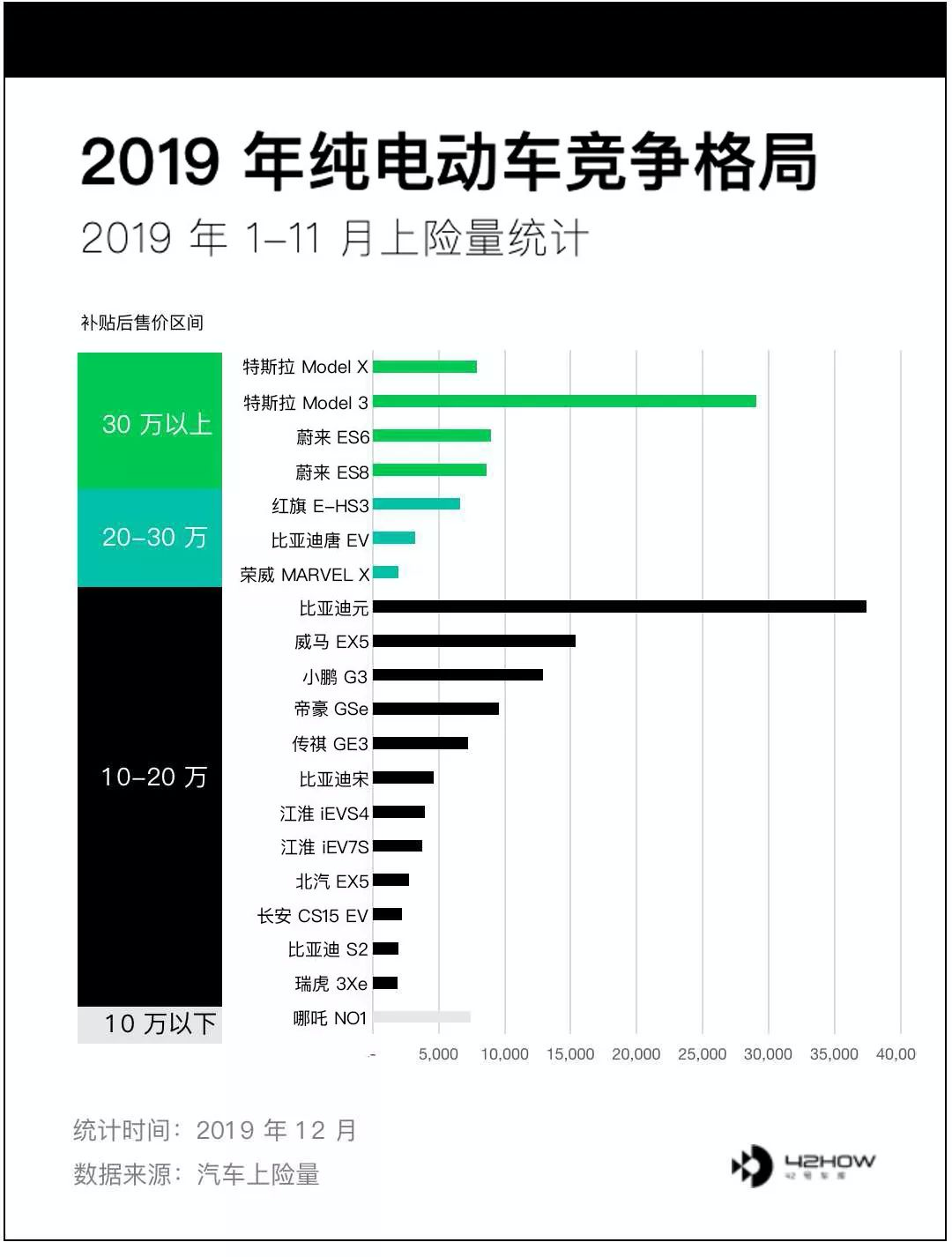
Market presence with product deficiency
Will there be a market for new energy cars in this range? From January to October, the sales volume for BYD Tang new energy power vehicle reached 22,182 units. However, when examining this number more closely, it is evident that the hybrid version of Tang accounted for the majority of sales, with only over 2,997 units of Tang EV sold during the same time period. Simply put, most people are still concerned about range anxiety. When faced with the option to purchase a hybrid version with no concern over battery power, a car that is also eligible for the green license plate, most people would chose the hybrid version.
As another example, the Roewe MARVEL X, priced in the 268.8-308.8K range, was launched specifically for this market, but only 1957 units were sold from January to November. The low sales number is not only due to the brand’s inadequate reputation, but also because Roewe MARVEL X has various problems with its product design and performance. In our car owner review program, our certified car owners also evaluated this car from multiple dimensions.
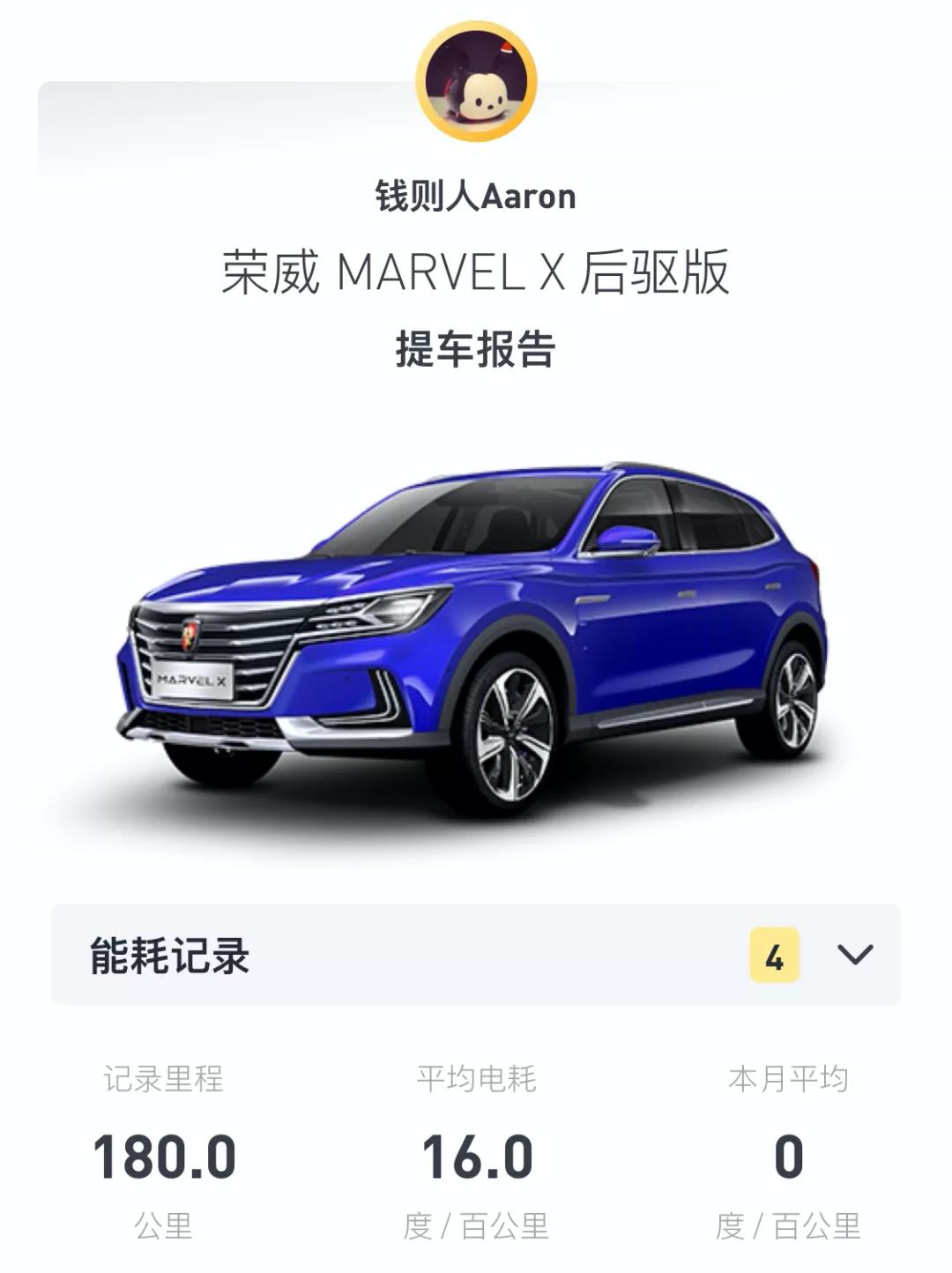
Purchasing decisions
In the section titled “Have you been satisfied overall with your purchase of the Roewe MARVEL X?,” a certified car owner selected “fairly good” and added the following comment: “Satisfaction comes entirely from electric vehicle technology, while dissatisfaction stems from Roewe. “Car owners may provide this feedback due to the license plate being a driving factor for the purchase, and also the desire to buy a luxury electric SUV. In this price range, MARVEL X is a suitable option.
Energy Consumption
Among our certified car owners, one recorded a total of four types of road conditions:
Driving 35 km in smooth city conditions with air conditioning on yielded an energy consumption rate of 14.6 kWh/100 km;
Driving 21 km in smooth city conditions with air conditioning on yielded 15.4 kWh/100 km;
Driving 60 km in congested city conditions with air conditioning on yielded 16.7 kWh/100 km;“`
-
Driving 64 km with “High speed scenario, Air conditioning on” consumes 16.4 kWh/100 km;
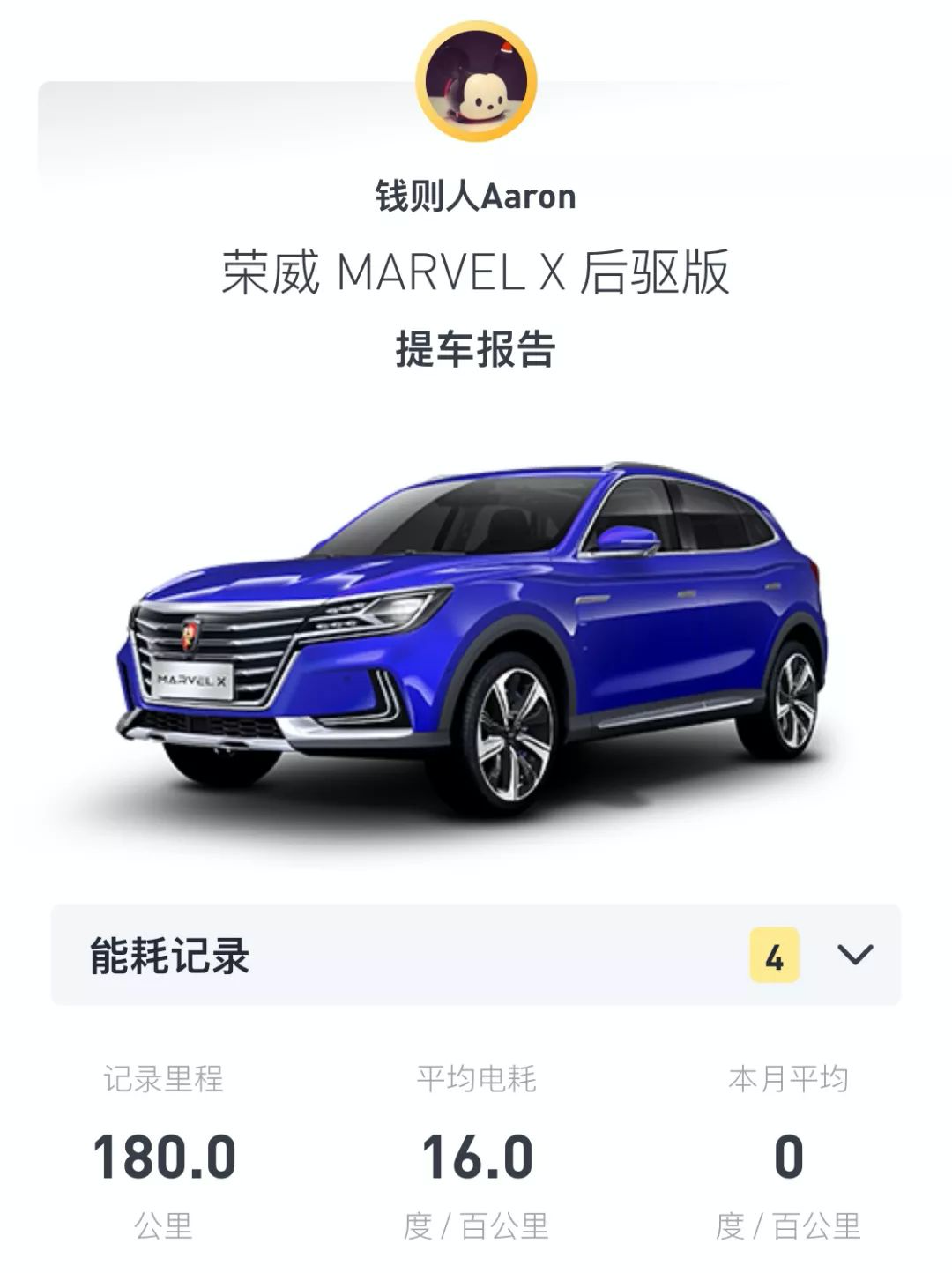
With a total distance of 180 km, the average consumption is 16.0 kWh/100 km. If calculated based on the total battery capacity of 52.5 kWh, the actual driving range is about 328 km. Of course, this is still based on a fully charged battery, so the daily driving range would be around 300 km or less, as most people won’t drive until the battery is empty before recharging it. Therefore, it can be seen that while the price of the Roewe Marvel X is high, its driving range and battery capacity are not advantages, and even lag behind.
-
Quality and workmanship
For a car at this price point, the quality and workmanship are undoubtedly important evaluation criteria. In the “How many times have you sent your Roewe MARVEL X for repair since you bought it?” survey, 3 car owners selected “4 times or more,” and 1 car owner selected “2 times.” One car owner said:
“I have driven 11,000 km so far, and picked up the car in late December last year. For a period of time, I almost went to the 4S store once a week. The first time was my own fault, as I rear-ended someone, but after that it was all MARVEL’s problem: 1. The headlight motor was broken, making a loud noise; 2. The door switch made a creaking sound, and the hinge part on the door was replaced; 3. The tire pressure monitoring system of the front wheel was broken; 4. After replacing the front wheel, the rear wheel broke. MARVEL’s problems didn’t cost me any money, but each time I had to run there, which was annoying. And there’s also the brake problem that can’t be fixed, when driving on bumpy roads, the car will lurch forward when I brake, which is very scary + unsafe.”
Another car owner selected “Very average, it definitely can’t be considered good” in the “What do you think of the workmanship of the Roewe MARVEL X?” category.
Here, it should be noted that the above are quotes from car owners themselves. From the number of certified car owners, there are currently 11 car owners, and 4 of them have reported repair issues. Although such data is incidental, it does indicate some issues with MARVEL X’s own product competitiveness, or warn peers of certain problems.
- Finally, in the “Survey” category, 3 car owners selected “Increase NEDC driving range to 500 km,” and one car owner selected “Change Roewe logo to Marvel brand” as considerations for what changes Roewe should make to the MARVEL X.
“`The above quotes three car owners’ concerns about the MARVEL X’s driving range and doubts about Roewe’s brand strength being able to support a car model in this price range. Perhaps a new logo would give it more appeal.
Overall, both Roewe MARVEL X’s product strength and brand power are inadequate, which is a significant reason for its low sales. This is also an issue that car companies wanting to explore this price range face.
BBA has not officially entered
When it comes to brand power, there is no doubt about BBA’s brand recognition in China. But for now, Mercedes-Benz does not have relevant products in this price range, and the cheapest new energy model of BMW is only the BMW X1, with a sale price of 3.998 million yuan.
Only Audi has a Q2L e-tron model, with a sale price range of 2.268-2.373 million yuan. But its NEDC driving range is only 265 km. Will you be willing to accept a car that only has a driving range of 265 km for over 200,000 yuan? I believe everyone will have their judgments.
Combined with the above, there is currently a blank period for pure electric models in the 200,000-300,000 yuan price range with both brand power and product strength. This is also a window period. In this price range, how to create a cost-effective car model is an important issue that traditional car companies and emerging car companies need to seriously consider.
Either do it well or be eliminated
We can see from the examples of Jaguar I-PACE and Roewe MARVEL X that the new energy market is currently not very tolerant. To sum it up, either do it well, or be eliminated.
2019 was the worst year for new energy vehicle companies, but 2020 is also full of challenges and suspense. The challenge is whether or not they can survive long-term without substantial subsidies, which has become the most important issue for many automakers. The suspense is about what will happen this year? Will subsidies be reduced again, and will the threshold for purchasing a car be raised? These are also concerns for many people.
On the other hand, good fortune relies on bad fortune. For everyone, 2020 may also be the best year because, in the face of transformational challenges, there are new opportunities. 2020 is a critical time for the transition from policy-driven to market-driven. The automaker’s anticipation of the cost of this turning point should be reasonable, which is an important benchmark for evaluation. Secondly, it also requires higher demands on the basis of collaboration. In the past, it relied on policies, now real abilities are needed.“`
Besides, for traditional car companies, while considering current profits, it is very necessary to seize the market opportunities and early brand recognition. Based on this, reasonable strategic judgments on future technological development should be made and infrastructure construction should be done to embrace the market better.
However, no matter whether it is traditional car companies or new forces in the automobile industry, creating valuable things in the revolution will be remembered by history.
“`
This article is a translation by ChatGPT of a Chinese report from 42HOW. If you have any questions about it, please email bd@42how.com.
